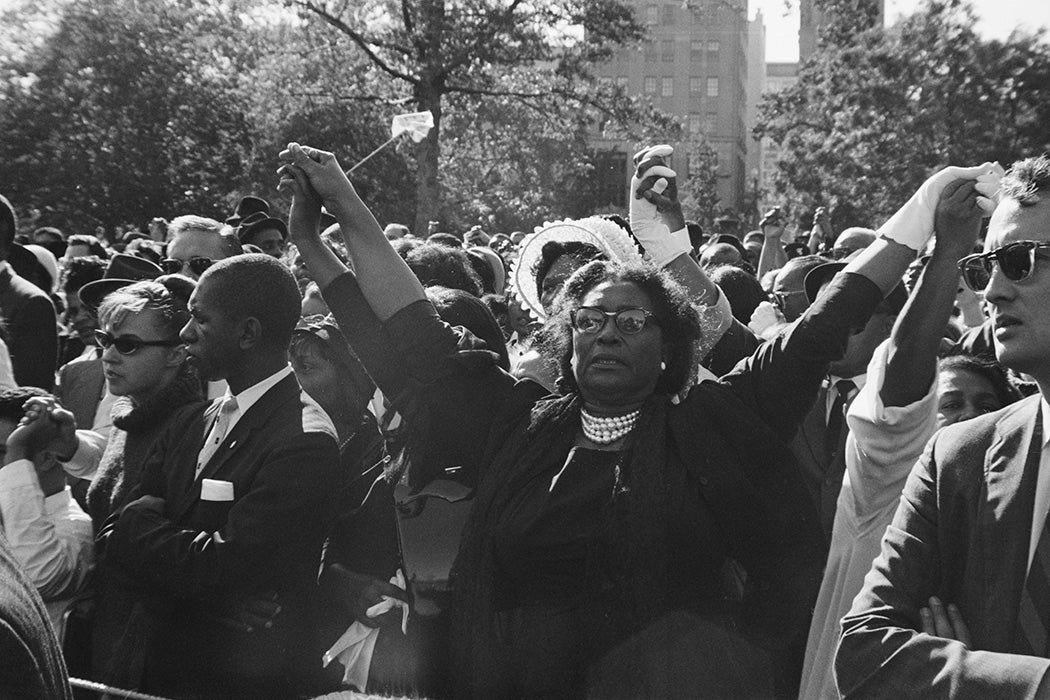Recently, the documentary Eyes on the Prize: Hallowed Ground premiered. It serves as both a companion and an introduction to an earlier work, Eyes on the Prize, a fourteen-hour documentary series by Henry Hampton Jr. that explored the long battle for civil rights for Black Americans. The original, groundbreaking documentary aired in 1987 and 1990. Getting it made, and creating a film that resonates today as it did then, wasn’t an easy task. Yet Eyes on the Prize “remains the definitive documentary work on the civil rights movement,” writes librarian Nadia Ghasedi.
In 1968, Hampton founded Blackside, Inc., a production company that mostly made training and government-sponsored films. But in 1978, Blackside answered a call for proposals from Capital City Communications, which was seeking series ideas from minority-owned companies. And, as Ghasedi explains, Hampton’s experiences marching across Selma, Alabama’s Edmund Pettus Bridge in 1965, and seeing firsthand “the courage of those fighting for equality and the resulting violence that would take the life of his friend [minister] James Reeb,” led him to propose a series on the Civil Rights Movement through the voices of those who lived it.
Blackside’s proposal was accepted, and Hampton and his team began filming interviews and collecting archival footage. But it became apparent from the beginning that Hampton’s vision wasn’t the same as Capital’s, and the two parted ways. Production was stopped, and filmed interviews and stock footage were put in storage.
Things were looking grim for Blackside. As Ghasedi writes, “The U.S. government had previously been the largest sponsor of independent films, and with the 1980 election of president Ronald Reagan funding for film production was drastically cut.” Blackside was running out of money, and for a while, Hampton was its only employee. But he never stopped thinking about his original idea. He made some calls and was able to use the old footage to put together an eight-minute sample. Hampton named the project Eyes on the Prize, after selecting the title from a list of freedom songs. But money was still an issue.
“Funding was a ten-year struggle,” writes media scholar Patricia Aufderheide. “Thirty-seven foundations turned them down in the first year of fundraising.” But eventually, PBS and the Ford Foundation would provide funding, and the work of assembling the film began. This would prove almost as difficult as fundraising, as archival sources were “buried everywhere, from network vaults to state archives to home garages. Part of the challenge of telling untold stories was finding hidden treasures,” Aufderheide writes.
And in telling stories that involved real people, getting interviews was also a race against the clock: according to Aufderheide, “Elderly people with great anecdotes were dying faster than they could be interviewed.” In 1987, the first part of the series, Eyes on the Prize: America’s Civil Rights Years, 1954−1965, aired on PBS in six one-hour episodes. Part two, America at the Racial Crossroads, 1965−1985, aired three years later, and featured eight one-hour episodes.
Get Our Weekly Digest
In the end, Hampton and his team created a work that would become a staple of history classrooms, but a work that, as Aufderheide points out, “was never merely an African-American story but an American story starring African Americans.”







